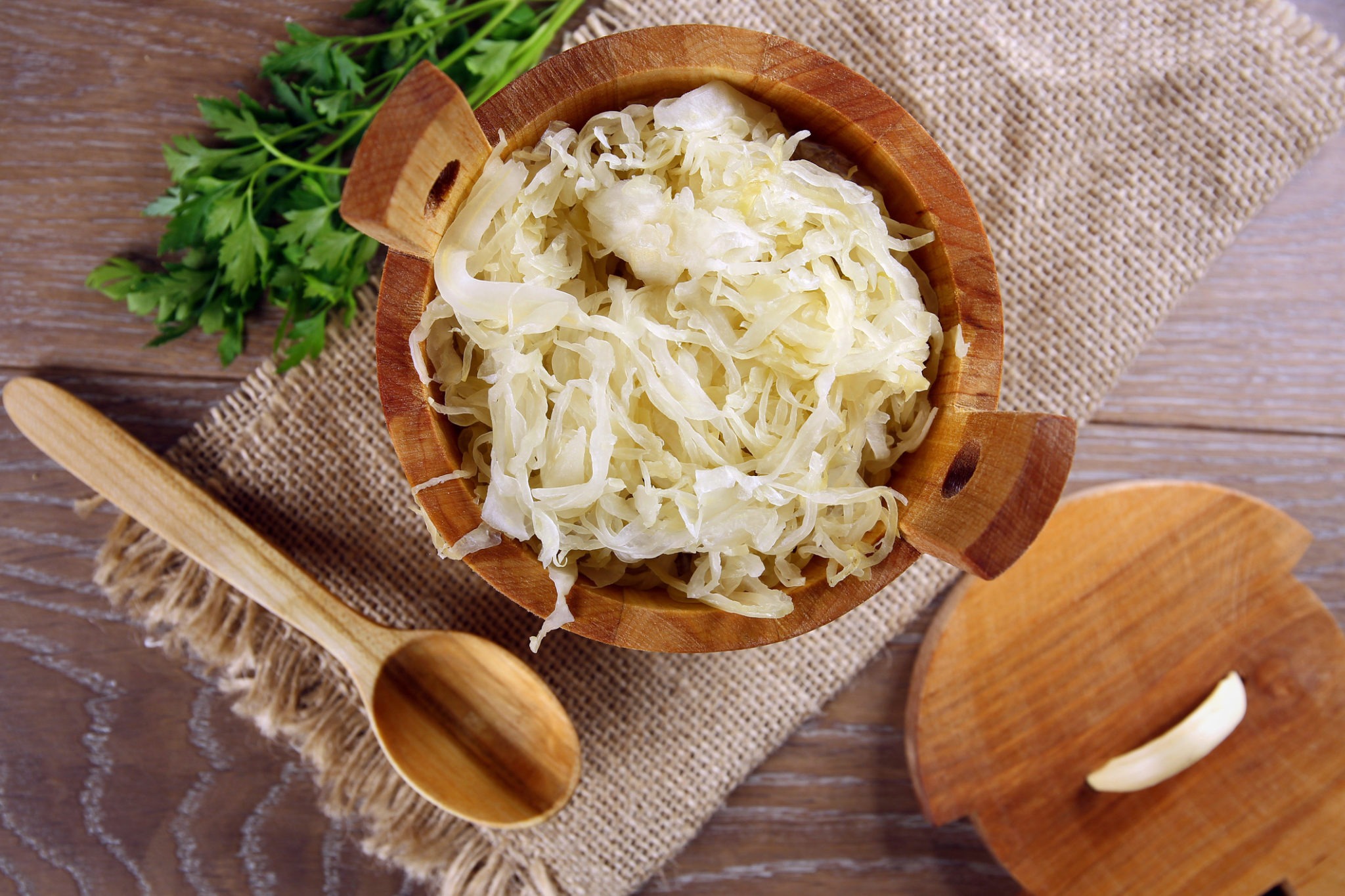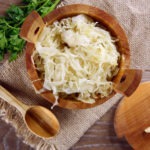Making sauerkraut at home is easy, economical, and delicious! Sauerkraut is finely cut raw cabbage that has been fermented by various lactic acid bacteria. It has a long shelf life and a distinctive sour flavor, both of which result from the lactic acid formed when the bacteria ferment the sugars in the cabbage leaves. It is one of the best known national dishes in Germany.
Kraut is one of the best starting points for trying your hand at fermentation because it’s one of the simplest, since you can make it with nothing more than cabbage and salt. Once you get the hang of it, it’s not much of a leap to try onions, pickles, like kimchi, that include a larger number of ingredients.
Sauerkraut is one of my favorite fermented foods. The flavor is fairly neutral, so it goes with a lot of meals. My kids love it because it isn’t spicy like other ferments. It’s a great, easy way to get some good probiotics into your day! Sauerkraut contains many nutrients important for optimal health.
Fermented Cabbage is rich in fiber, vitamins, and minerals. Its probiotics also help your body absorb these nutrients more easily, which is what makes sauerkraut more nutritious than raw cabbage or coleslaw. Probiotics like those in fermented cabbage can help improve the bacterial balance in your gut after it has been disturbed by the use of antibiotics. This can help reduce or prevent antibiotic-provoked diarrhea. Sauerkraut is a source of probiotics, vitamin C, and iron, all of which contribute to a stronger immune system.
PrintSauerkraut
Sauerkraut is one of my favorite fermented foods. The flavor is fairly neutral, so it goes with a lot of meals.
- Prep Time: 1:00
- Total Time: 1 hour
- Yield: 16
- Category: Side Dish
- Method: Fermenting
- Cuisine: German / Chinese
- Diet: Vegetarian
Ingredients
Instructions
Weigh your cabbage to see how much salt you should use. Remove the outer leaves of your cabbage and any that are damaged. Discard. Cut out the core and rinse the cabbage well, allowing the water to flow between the cabbage leaves. Drain well.
Reserve 1 outer leaf. Thinly shred the remaining cabbage with a knife or food processor. Place in a large bowl. Sprinkle the calculated amount of salt over the cabbage and toss well. Let sit for 15 minutes.
Massage the cabbage with your hands for 5 minutes. The cabbage should release a good amount of liquid during this time.
Pack the cabbage firmly into a very clean glass quart jar. Pour the liquid that was released during kneading on top. Cut a circle the same diameter as your jar out of the reserved cabbage leaf. Place it on top of the packed-down cabbage. Place a weight on top of the cabbage to ensure that it stays under the brine. If the brine doesn’t completely cover the cabbage and weight, top off with a 2% solution of salt water (1 teaspoon salt per cup of water).
Screw a plastic lid onto the jar. Place the jar in a rimmed pan (to catch any overflow) and allow to ferment at room temperature until the kraut is as sour as you like it. This can take anywhere from 1–4 weeks.
After it’s done fermenting, which takes 1-4 weeks, store the sauerkraut in the refrigerator.
Notes
Takes 1-4 weeks for fermentation to complete.

